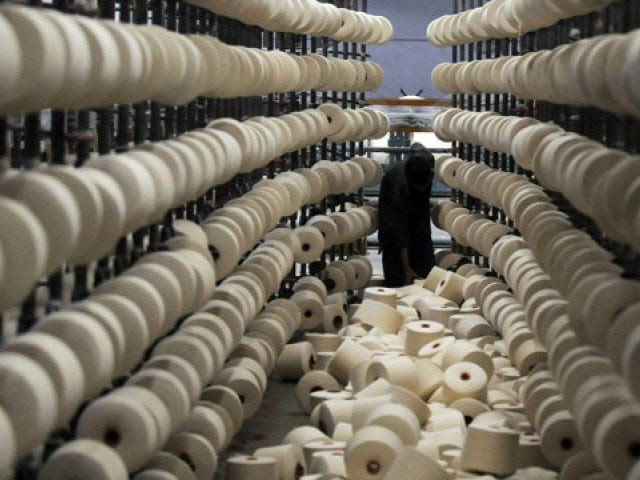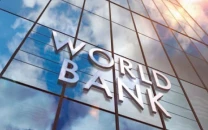Pakistan’s economy fared ‘reasonably well’
SBP says key macroeconomic indicators recorded improvements

SBP says key macroeconomic indicators recorded improvements. PHOTO: AFP
In its annual report on the state of the economy released on Friday, the SBP said key macroeconomic indicators, like inflation, fiscal balance and current account balance, recorded improvements while the real GDP growth clocked up at 4.2% in 2014-15.
It’s the economy, stupid!
The report emphasised the improvement in the external sector given its significant positive spill-over to the rest of the economy. “The external account improved due to robust growth in workers’ remittances and a sharp decline in global oil prices. As a result, not only the country’s foreign exchange reserves reached an all-time high level of $18.7 billion by end-June 2015 sufficient to finance around five months of the import bill, the exchange rate also remained stable during the year,” the central bank said.
More importantly, the improvement in the external account significantly diluted the global risk perception for Pakistan, it added.
The report said the stable rupee parity kept Consumer Price Index (CPI) inflation under control and lowered inflation expectations. However, the significant reduction in CPI inflation during 2014-15 was caused primarily by a sharp decline in oil and other commodity prices.
Pakistan’s economy enjoying period of optimism: report
The average CPI inflation fell from 8.6% in the preceding year to 4.5% in 2014-15. “A stable outlook of inflation and balance of payments allowed policymakers to implement pro-growth strategies,” it said.
Weaknesses
While the report recognised the fiscal consolidation efforts of the government in terms of controlling expenditure, it also pointed out structural weaknesses in tax collection. A sharp decline in oil prices and subdued manufacturing activities during the year had made already sluggish tax collections more difficult. The provincial budget surplus also remained lower than the last year.
In order to finance the budget deficit, the government relied heavily on commercial banks, the report said. However, the government retired a large amount of its debt to the SBP in 2014-15. In the meantime, the SBP continued liquidity injections to ensure adequate supply of loanable funds for the private sector.
UAE refinery to pump $500m into Pakistan
Working capital utilisation declined due to a drop in commodity prices. A redeeming feature has been the increase in long-term financing, which indicates new investments in plant and machinery. Nevertheless, the overall credit to the private sector remained lower than that in the previous year.
According to the report, the country was able to marginally reduce its public debt-to-GDP ratio mainly due to a revaluation gain from the dollar appreciation against major currencies. The reduction in the debt burden was realised despite the successful launch of five-year Sukuk bond in November 2014, which allowed the government to raise $1 billion against the initial target of $500 million.
While the report welcomed positive developments in the economy, it reiterated several longstanding structural constraints -- for example, low investment rate, low tax-to-GDP ratio and continuing energy shortages -- that continue to hinder a sharp economic recovery.
The report recognised that the improvement in macroeconomic conditions and security situation offers an opportunity to address structural impediments to economic growth on a priority basis. The report also emphasised the need to pursue an effective and well-coordinated industrial policy to expand industrial and export base. “Increasing exports is critical for resolving foreign exchange constraints to growth,” it said.
Published in The Express Tribune, December 12th, 2015.
Like Business on Facebook, follow @TribuneBiz on Twitter to stay informed and join in the conversation.



















COMMENTS
Comments are moderated and generally will be posted if they are on-topic and not abusive.
For more information, please see our Comments FAQ